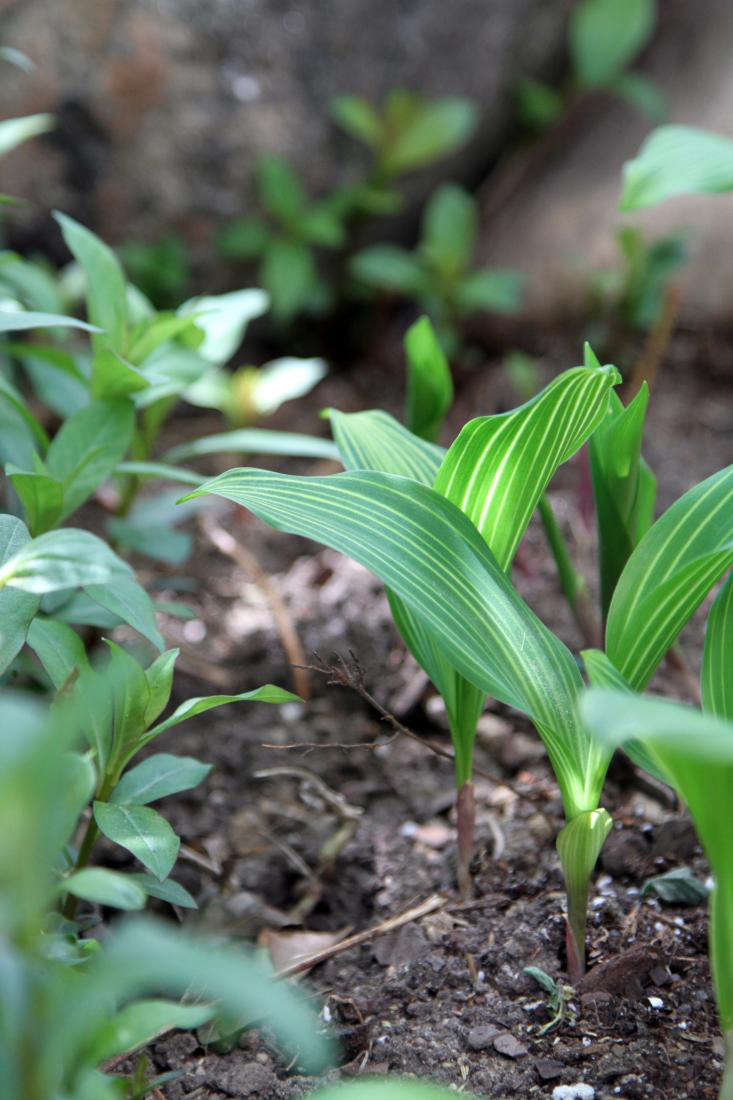Lily of the Valley surrounded the base of a tree that my sisters and I called our fort when we were growing up. Well-suited to shady spots under trees, Lily of the Valley is surprisingly hardy for a plant that produces such delicate flowers. All those years my sisters and I ripped up blossoms to present make bouquets for our parents did nothing to prevent the plant from flowering again the next spring.
Here, a few other facts:
Pips: Lily of the Valley doesn’t grow from seeds or bulbs, but from rhizomes, which spread underground like stems. Dormant stems you can plant for new growth are called pips. Generally considered an invasive, with some careful attention Lily of the Valley can make a beautiful ground cover in places where it might otherwise be difficult for plants to grow.
A Different Stripe: Lily of the Valley, or convallaria majalis, has a number of different cultivars, including the Convallaria majalis ‘Albostriata’ shown above with variegated leaves. Most Lily of the Valley has tiny white bell-shaped flowers, but the Convallaria majalis ‘Rosea‘ has blossoms that are bright pink when they first bloom.
If you’d like to plant your own pot of Lily of the Valley, a 12-pip kit with potting soil is $45 from White Flower Farm.
Inimitable: The scent of Lily of the Valley is one of the most delightful things about it. But, try as you might, it’s not something that’s easy to bottle. In fact, most of the Lily of the Valley fragrances on the market are made from synthetic fragrance oils and not essential oils derived directly from the plant.

Poison: We don’t mean to be alarmist here, but Lily of the Valley is actually poisonous. Most critters know enough to steer clear, but if you start plants indoors, it’s a good idea to be vigilant with pets and small children.

Brin de Muguet: To celebrate the first of May, the French exchange small posies of Lily of the Valley, known there as muguet de bois. Here in the Northeast, Lily of the Valley’s bloom time tends to be toward the middle of the month. We have our own take on a Lily of the Valley posy coming later in the week.

Forcing Lily of the Valley Indoors: If you want to get a headstart on spring, Lily of the Valley can be forced easily indoors. Stay tuned for a how-to later this week.
See more of our Plant of the Week posts and learn how to make Easy Sugared Violas and Natural Fabric Dye From Wisteria.
Finally, get more ideas on how to successfully plant, grow, and care for lily of the valley with our Lily of the Valley: A Field Guide.
Interested in other bulbs and tubers for your garden or indoor space? Get more ideas on how to plant, grow, and care for various bulbs and tubers with our Bulbs & Tubers: A Field Guide.
Finally, get more ideas on how to plant, grow, and care for various perennial plants with our Perennials: A Field Guide.
















Have a Question or Comment About This Post?
Join the conversation (1)